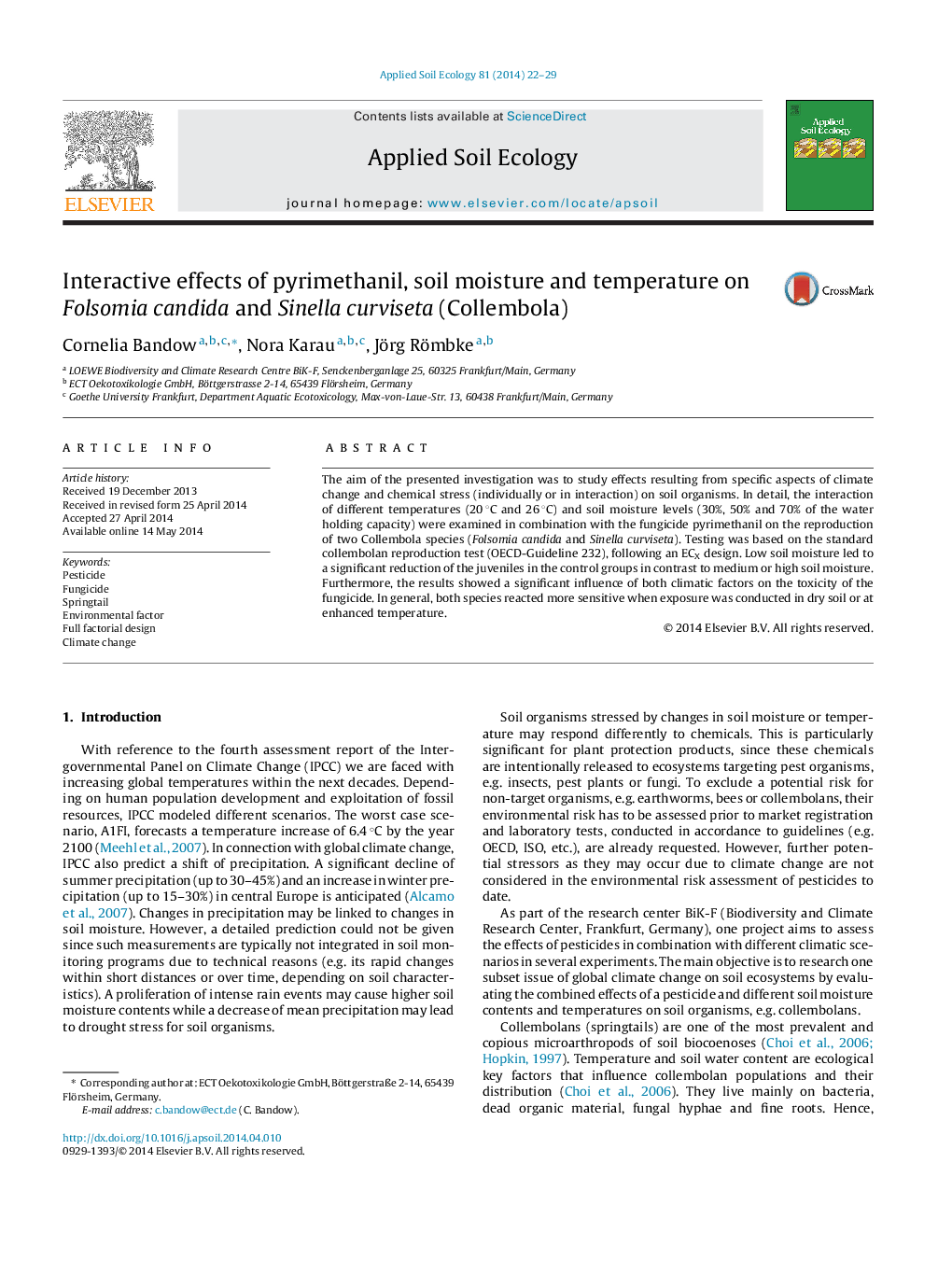| Article ID | Journal | Published Year | Pages | File Type |
|---|---|---|---|---|
| 4382080 | Applied Soil Ecology | 2014 | 8 Pages |
•Low soil moisture reduces survival of adult collembolans and number of juveniles.•S. curviseta reacts less sensitive to pyrimethanil than F. candida.•Effect concentrations were significantly impacted by temperature and soil moisture content.•Low soil moisture increases the effects of pyrimethanil on collembolans.•Pyrimethanil degradation is independent from climatic factors at high concentration.
The aim of the presented investigation was to study effects resulting from specific aspects of climate change and chemical stress (individually or in interaction) on soil organisms. In detail, the interaction of different temperatures (20 °C and 26 °C) and soil moisture levels (30%, 50% and 70% of the water holding capacity) were examined in combination with the fungicide pyrimethanil on the reproduction of two Collembola species (Folsomia candida and Sinella curviseta). Testing was based on the standard collembolan reproduction test (OECD-Guideline 232), following an ECX design. Low soil moisture led to a significant reduction of the juveniles in the control groups in contrast to medium or high soil moisture. Furthermore, the results showed a significant influence of both climatic factors on the toxicity of the fungicide. In general, both species reacted more sensitive when exposure was conducted in dry soil or at enhanced temperature.
